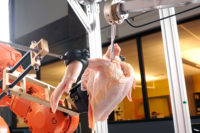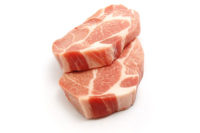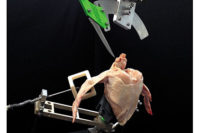The need for automation and robotics in cutting and deboning is becoming more necessary with labor challenges, but it is not as prevalent yet as the old adage “yields pay for labor.” This saying is changing with higher costs of labor, such as worker’s compensation, insurance, medical, etc., says John Johnson, managing director of Epsilon Industries, in Morris, Ill.
“Automated systems will not take vacations, call in sick or vacillate in performance,” he says. “Speed, efficiencies and food and worker safety are also advantages to automation.”
Mike Bliss, vice president of operations at Butterball, in Garner, N.C., agrees that with automated cutting and deboning equipment, the company’s processes are much safer for workers involved, as the more dangerous job aspects have been heavily reduced.
“In addition, employee attendance that might have been once been negatively impacted by system failure or other challenges has improved,” he says. “Finally, our operating costs are lower, as the tools are easier for employees to operate and more efficient.”
The greatest benefit that Sanderson Farms Inc., based in Laurel, Miss., sees with automated deboning is the reduction in labor needed to operate deboning departments.
“Our industry is not unlike others in that we are experiencing a very tight labor pool from which to attract talented motivated employees,” says Brian Williams, Sanderson Farms’ director of processing. “We have implemented dark-meat automated deboning at many of our facilities, and the results have been very favorable. Now we are focusing on white-meat deboning to see if the results are similar.”
Sanderson Farms started its first in plant trial with automated white-meat deboning equipment in late September. Williams said the company has been very thorough in research and testing to make sure the equipment will deliver its desired results in regard to product quality and yield.
“We actually implemented automated white-meat deboning in the mid ’90s, but went back to manual deboning because the yield deficiencies more than offset any cost improvements,” he says.
Butterball has automated the process of deboning both sides of the turkey, as well as using the machine to debone the thigh, drum and wing. “Since our system uses a scale to sort the [carcass without giblets] by weight, it’s tightened our precision from start to finish, allowing us to maximize our yields,” Bliss says.
Butterball’s yields have improved with the help of automated deboning and cutting equipment, primarily due to the precision and consistency of cuts.
“Automated deboning has reduced employee turnover, eliminating any delays and hazards that new employees may have previously faced in learning the manual deboning training processes,” Bliss says. “The industry as a whole continues to look for newer, safer and more precise deboning and cutting equipment that gives us a cutting edge. However, the challenge for anyone looking at automation is the ability to maintain and adjust equipment. This takes an experienced and well-trained maintenance team with minimal turnover. Even with one of the better maintenance training systems in the industry, it took us 12 to 18 months to fine-tune our equipment.”
“As we look toward further automated advancements, companies in the meat and poultry industry are continuously searching for new improvements that help us capitalize on yields and ultimately improve the bottom line,” he adds. “Ultimately, processors are looking for tools that more seamlessly and precisely remove meat from the bone.”
Numerous equipment manufacturers are working on automated equipment and, as is often the case, more competition leads to improvements in results.
“We are cautiously optimistic that we will find an automated system that will meet our expectations,” Williams says. “Our thought is the improvement in vision grading and sizing will allow us to improve the size consistency of front halves going into the deboning operation, which will deliver improved results. We have seen this in our dark-meat deboning, and there is no reason to think it will not apply to white-meat deboning.”
Sanderson Farms is hearing from equipment manufacturers that the new systems deliver yields in line with manual deboning as well.
“Our expectations are very high when it comes to yield targets …” Williams says. “We will definitely not sacrifice product quality or yield in our operations. We are currently fully staffed in our operations, so we are not pressured into putting in a system that does not meet all of our objectives.”
All carcasses are suited for automation as it has been shown in studies, practical applications, and patented equipment that the anatomical structure of animals can be used to manipulate cutting and trimming tools, Johnson says. “Vision systems are highly effective in current tasks such as beef grading, water jet trimming of various protein cuts and rudimentary cutting applications,” he says.
While more advances in vision systems and algorithms to predict cutting and trimming paths are being developed, the biggest challenge is integration of vision systems into cutting or trimming.
“It may seem simple, but although the anatomical landmarks for all proteins can be mapped, there is significant work that must be done to replicate the human worker,” Johnson says.
Bliss also expects automation in the industry to continue growing throughout upcoming years. “One specific area of improvement on our radar is improved vision systems and how they can be incorporated into the process so that the operator can be alerted for any necessary equipment adjustments,” he says. “Equipment manufacturers will strive for obtaining the maximum value within operations, and we look toward automation to further adapt and meet these increased demands.”
Sanderson Farms believes automation will continue to improve and become more widely used in the industry as well.
“Our industry has evolved, and there are many very talented people working on areas where automation can really be of benefit,” Williams says. “We sit down regularly with our equipment manufacturers and challenge them to think 10 and 15 years down the road and bring us ideas that benefit our employees and our customers.”
The advancement of robotics is necessary for the longevity of the meat industry as well, Johnson says.
“The labor market continues to be increasingly challenging — ask any HR manager,” he explains. “Turnover is high in many facilities, and volumes along with yields continue to increase. Advanced companies will invest in technology that will provide current and future returns.” NP





Report Abusive Comment